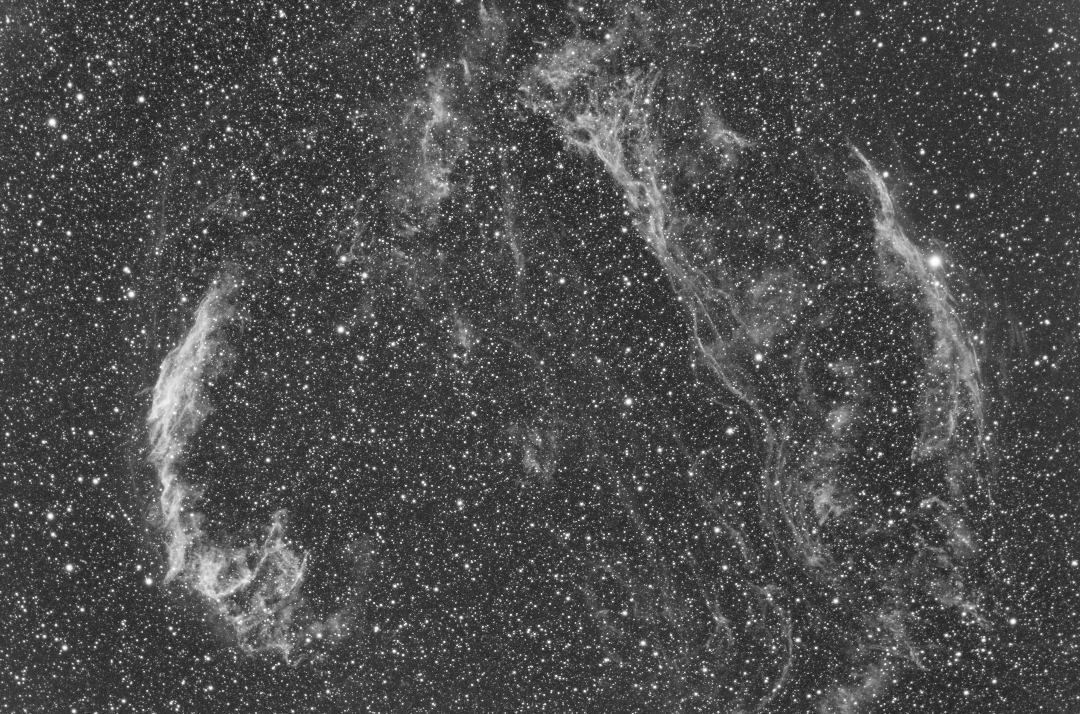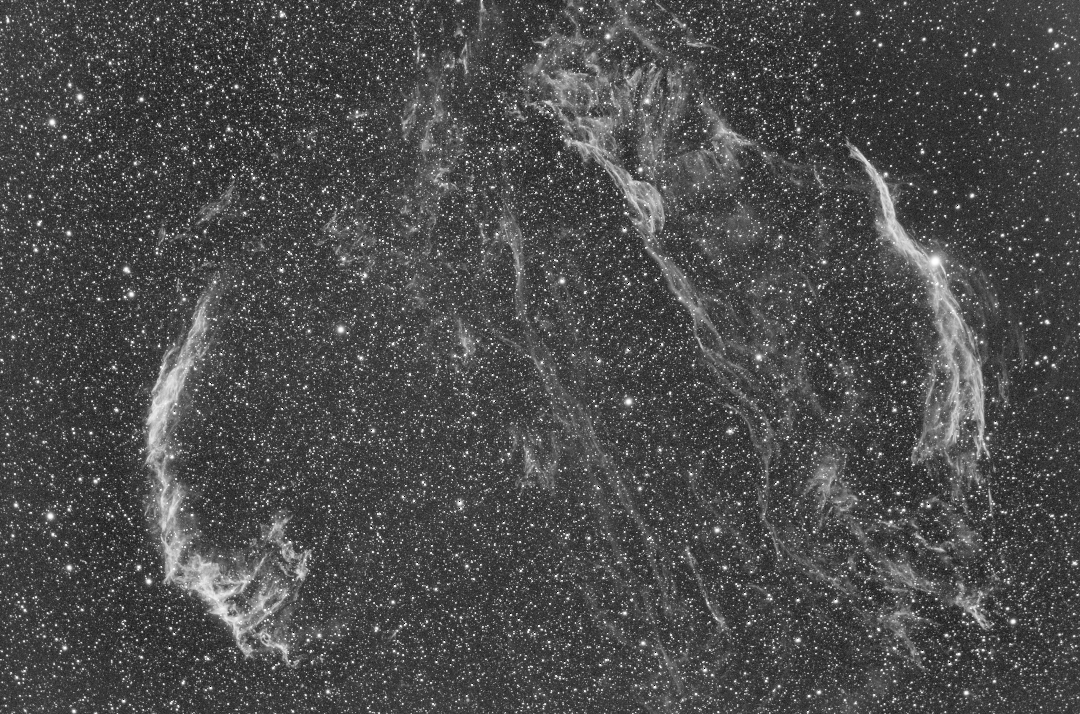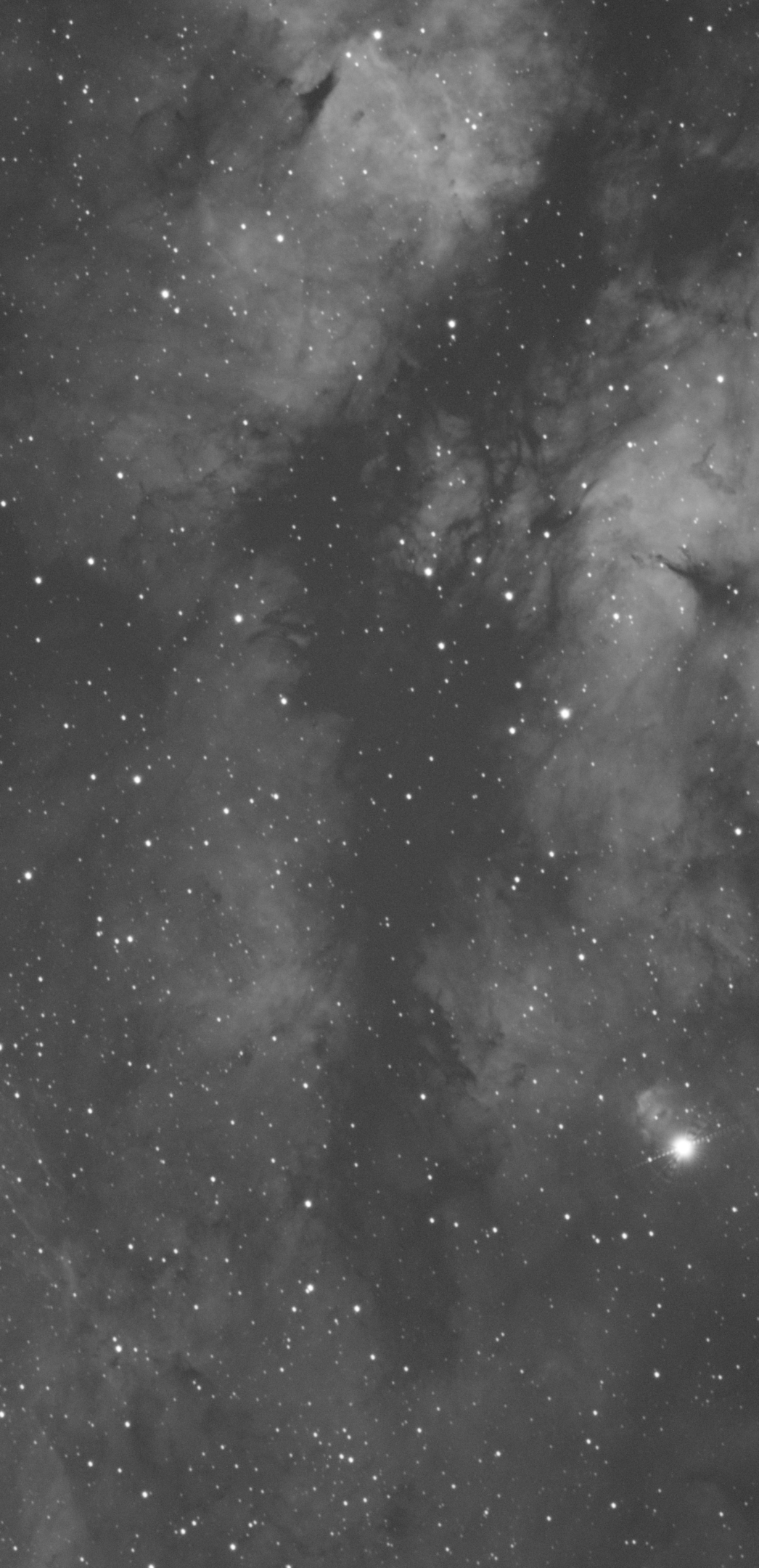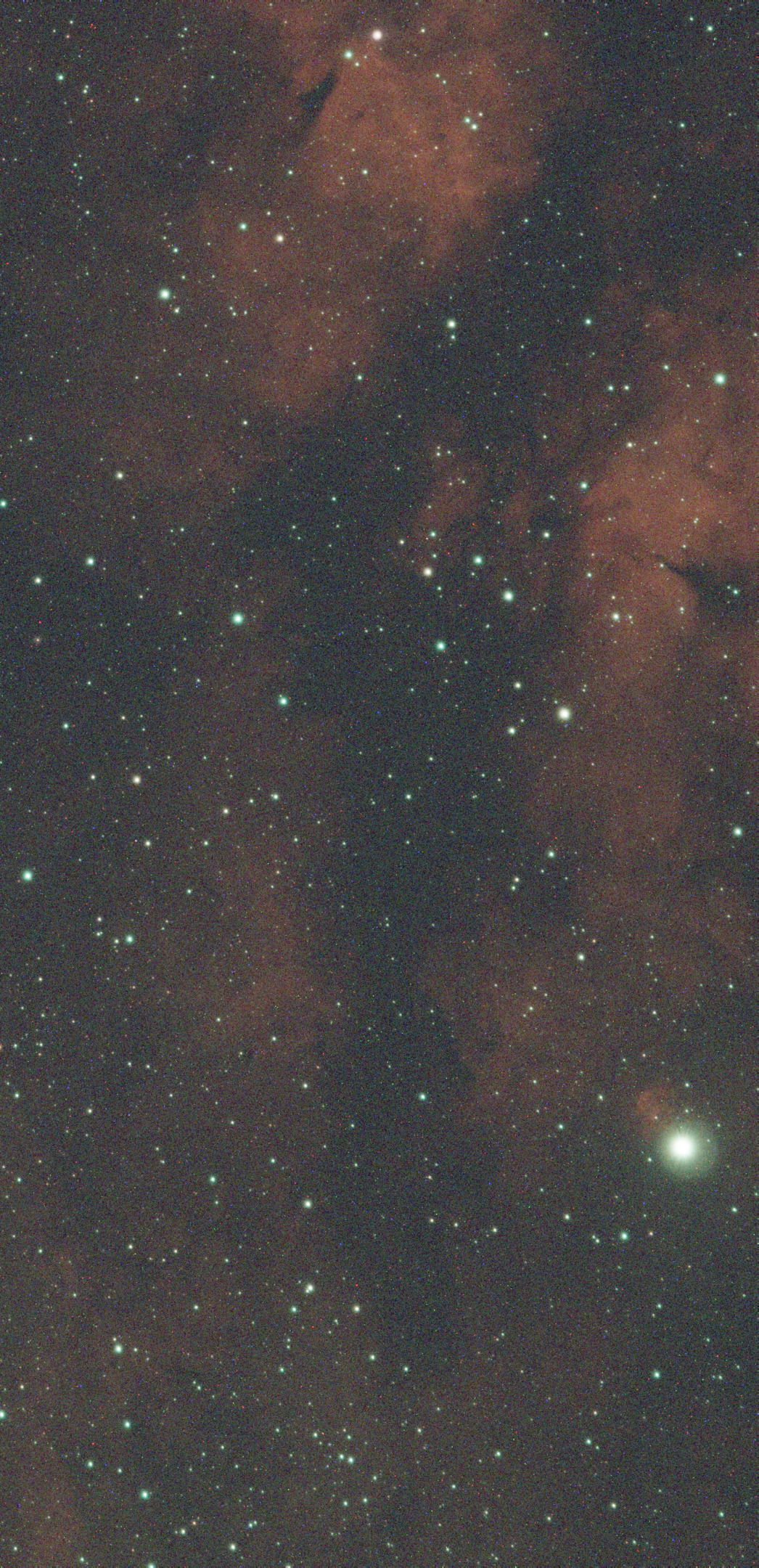While not the first astrophotography image I have taken, this is was the first using a monochrome camera. I have both broadband LRGB filters and narrowband filters, I decided for my first attempt I would jump right into narrowband imaging. In early summer the Veil Nebula rises in the North Eastern sky early in the evening, with the short summer nights, every bit of time helps with astrophotography.

The source supernova was a star 20 times more massive than the Sun which exploded between 10,000 and 20,000 years ago. At the time of explosion, the supernova would have appeared brighter than Venus in the sky, and visible in daytime. The remnants have since expanded to cover an area of the sky roughly 3 degrees in diameter (about 6 times the diameter, and 36 times the area, of the full Moon). While previous distance estimates have ranged from 1200 to 5800 light-years, a recent determination of 2400 light-years is based on direct astrometric measurements. (The distance estimates affect also the estimates of size and age.) -wiki
I captured this image over 4 nights in North Western Iowa under Bortle 7 skies on July 9,11,12 and 13 2022. A total of 18 hours of exposure across three filters.
- 62 x 360 sec of Ha
- 60 x 360 sec of Oiii
- 58 x 360 sec of Sii
Equipment used:
- iOptron CEM70 mount on a Tri-Pier
- William Optics Zenithstar 61 II with a Flat61A adjustable field flattener
- ZWO ASI 2600MM Pro main camera Bin 1, Gain 101, Offset 50
- ZWO 7 position electronic filter wheel
- Optolong 7nm Ha (Hydrogen Alpha), 6.5nm Sii (Sulfur II) and 6.5nm Oiii (Oxygen III) 36mm unmounted filters
- ZWO ASI 290MM Mini guide camera with the ZWO 30mm Mini Guide scope
- ZWO Electronic Auto Focuser (EAF)
Here is an example of Ha and Oiii after stacking and stretching in monochrome format before being combined together with Sii to form the image above


While the two images above look very similar a close inspection will show that the different gases that make up the super nova remnant are more pronounced in some areas then others. This small difference leads to the Veil nebula having such a strong Red/Blue appearance.
My first impressions of monochrome imaging
Much lower image noise compared to a OSC (One Shot Color) camera. I was expecting an improvement in image quality without have a Bayer matrix over the camera sensor, like a OSC, but the complete smoothness of the image was impressive. Below is a an example of the same region near Sadr, one shot with the ASI2600MM PRO with an Ha FIlter 6 minutes vs the ASI533MC PRO with an L-Extreme filter. Both taken on the same night with nearly the same focal length (391mm ASI2600 vs 360mm ASI533)


Imaging processing defiantly has a few more steps compared to processing OSC images. While the basic pre-processing is the same you must now do it 3 times, once for each filter compared to a single time with a color camera. While this does add time to getting a stacked color image, having the separate images for each filter does open up some additional pre-processing of the data before combining into a color image.
Imaging with filters does provide its own set of challenges. With a OSC camera I could easily setup my target and imaging time and let it go. When using filters with a monochrome camera you must decide how and when you will make filter changes. The added expense of an Electronic Filter Wheel (EFW) is not required but in my option worth the investment. While the EFW will handle filter changes, you will also need to decided when to change filters. For the Veil nebula I set it up to change the filter after each exposure and to perform a drizzle after 3 exposures, 1 for each filter. I did this in hopes of having a uniform background between filters throughout the night as we were near a full moon rising in the early evening.
